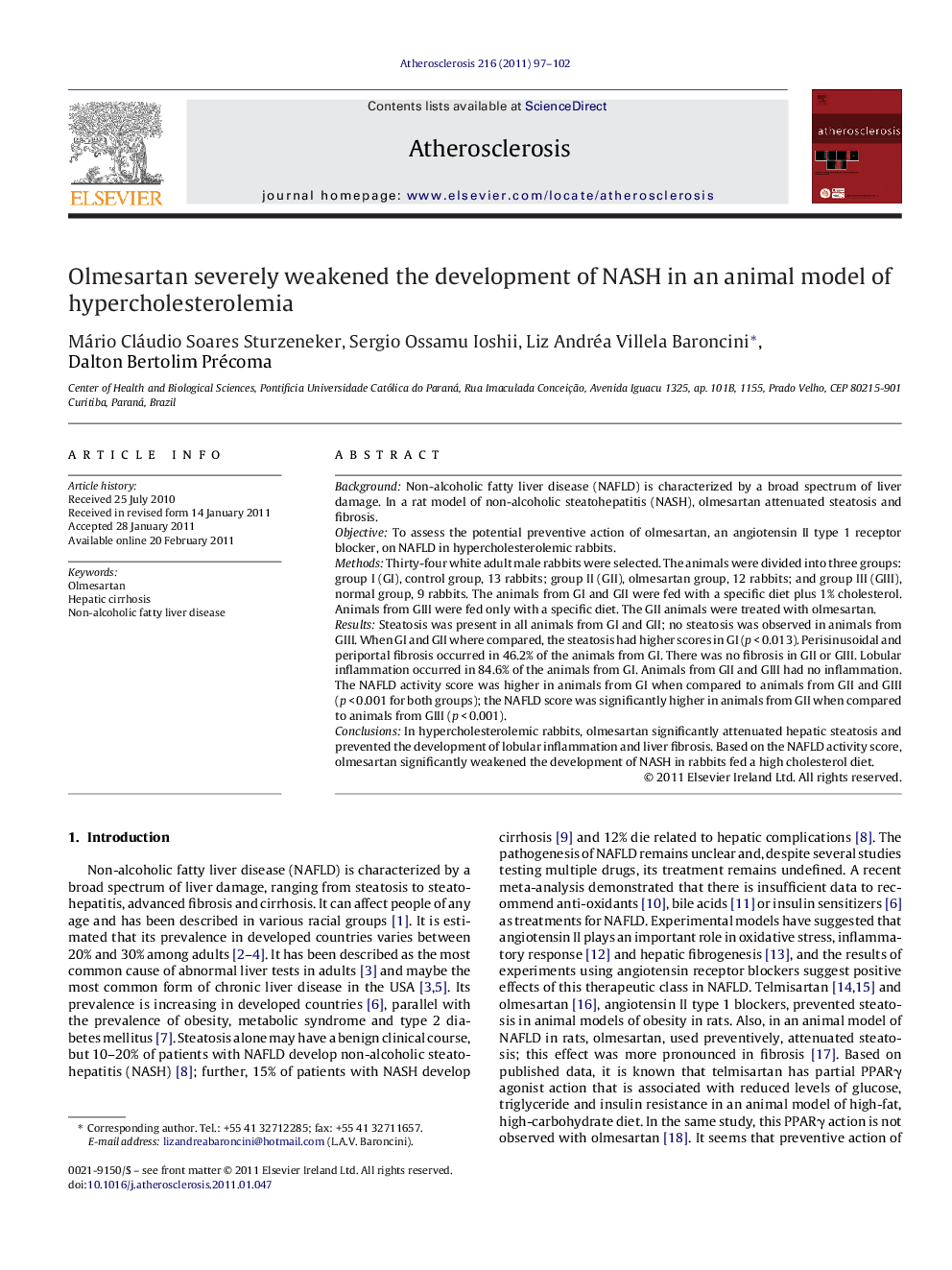| Article ID | Journal | Published Year | Pages | File Type |
|---|---|---|---|---|
| 5949700 | Atherosclerosis | 2011 | 6 Pages |
BackgroundNon-alcoholic fatty liver disease (NAFLD) is characterized by a broad spectrum of liver damage. In a rat model of non-alcoholic steatohepatitis (NASH), olmesartan attenuated steatosis and fibrosis.ObjectiveTo assess the potential preventive action of olmesartan, an angiotensin II type 1 receptor blocker, on NAFLD in hypercholesterolemic rabbits.MethodsThirty-four white adult male rabbits were selected. The animals were divided into three groups: group I (GI), control group, 13 rabbits; group II (GII), olmesartan group, 12 rabbits; and group III (GIII), normal group, 9 rabbits. The animals from GI and GII were fed with a specific diet plus 1% cholesterol. Animals from GIII were fed only with a specific diet. The GII animals were treated with olmesartan.ResultsSteatosis was present in all animals from GI and GII; no steatosis was observed in animals from GIII. When GI and GII where compared, the steatosis had higher scores in GI (p < 0.013). Perisinusoidal and periportal fibrosis occurred in 46.2% of the animals from GI. There was no fibrosis in GII or GIII. Lobular inflammation occurred in 84.6% of the animals from GI. Animals from GII and GIII had no inflammation. The NAFLD activity score was higher in animals from GI when compared to animals from GII and GIII (p < 0.001 for both groups); the NAFLD score was significantly higher in animals from GII when compared to animals from GIII (p < 0.001).ConclusionsIn hypercholesterolemic rabbits, olmesartan significantly attenuated hepatic steatosis and prevented the development of lobular inflammation and liver fibrosis. Based on the NAFLD activity score, olmesartan significantly weakened the development of NASH in rabbits fed a high cholesterol diet.
